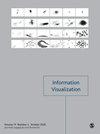评估视觉分析系统的策略:系统回顾与新视角
IF 1.8
4区 计算机科学
Q3 COMPUTER SCIENCE, SOFTWARE ENGINEERING
引用次数: 0
摘要
近年来,可视分析系统(VAS)已被用于解决不同应用领域中的各种复杂问题。然而,可视分析系统固有的缺点是评估不足,导致在分析推理、信息合成以及从大量、不断变化、模棱两可且经常相互矛盾的数据中得出见解时,偶尔会出现不准确的情况。因此,实施适当的评估方法的意义无论怎样强调都不为过,因为它在加强可视化系统的设计和开发方面发挥着举足轻重的作用。本文通过系统地探讨各种评估策略(ES)来评估可视化系统。虽然现有的一些研究已经对一些评估策略进行了研究,但针对可视化研究的全面、系统的综述仍然有限。在这项工作中,我们介绍了七种最先进且广受认可的评估策略,即(1)仪表盘比较;(2)基于洞察力的评估;(3)日志数据分析;(4)李克特量表;(5)定性和定量分析;(6)尼尔森启发式方法;以及(7)眼球跟踪器。此外,本报告还深入探讨了这些 ES 的历史背景,并探讨了这些 ES 的大量应用,揭示了相关的评估实践。通过全面回顾,我们概述并分析了可视化领域的主要评估目标,阐明了它们的演变和内在对比。此外,我们还指出了随着新 ES 的出现而出现的公开挑战,同时还强调了从现有文献中收集到的关键主题,这些主题具有在未来研究中进一步探索的潜力。本文章由计算机程序翻译,如有差异,请以英文原文为准。
Strategies for evaluating visual analytics systems: A systematic review and new perspectives
In recent times, visual analytics systems (VAS) have been used to solve various complex issues in diverse application domains. Nonetheless, an inherent drawback arises from the insufficient evaluation of VAS, resulting in occasional inaccuracies when it comes to analytical reasoning, information synthesis, and deriving insights from vast, ever-changing, ambiguous, and frequently contradictory data. Hence, the significance of implementing an appropriate evaluation methodology cannot be overstated, as it plays a pivotal role in enhancing the design and development of visualization systems. This paper assesses visualization systems by providing a systematic exploration of various evaluation strategies (ES). While several existing studies have examined some ES, the extent of comprehensive and systematic review for visualization research remains limited. In this work, we introduce seven state-of-the-art and widely recognized ES namely (1) dashboard comparison; (2) insight-based evaluation; (3) log data analysis; (4) Likert scales; (5) qualitative and quantitative analysis; (6) Nielsen’s heuristics; and (7) eye trackers. Moreover, it delves into their historical context and explores numerous applications where these ES have been employed, shedding light on the associated evaluation practices. Through our comprehensive review, we overview and analyze the predominant evaluation goals within the visualization community, elucidating their evolution and the inherent contrasts. Additionally, we identify the open challenges that arise with the emergence of new ES, while also highlighting the key themes gleaned from the existing literature that hold potential for further exploration in future studies.
求助全文
通过发布文献求助,成功后即可免费获取论文全文。
去求助
来源期刊

Information Visualization
COMPUTER SCIENCE, SOFTWARE ENGINEERING-
CiteScore
5.40
自引率
0.00%
发文量
16
审稿时长
>12 weeks
期刊介绍:
Information Visualization is essential reading for researchers and practitioners of information visualization and is of interest to computer scientists and data analysts working on related specialisms. This journal is an international, peer-reviewed journal publishing articles on fundamental research and applications of information visualization. The journal acts as a dedicated forum for the theories, methodologies, techniques and evaluations of information visualization and its applications.
The journal is a core vehicle for developing a generic research agenda for the field by identifying and developing the unique and significant aspects of information visualization. Emphasis is placed on interdisciplinary material and on the close connection between theory and practice.
This journal is a member of the Committee on Publication Ethics (COPE).
 求助内容:
求助内容: 应助结果提醒方式:
应助结果提醒方式:


